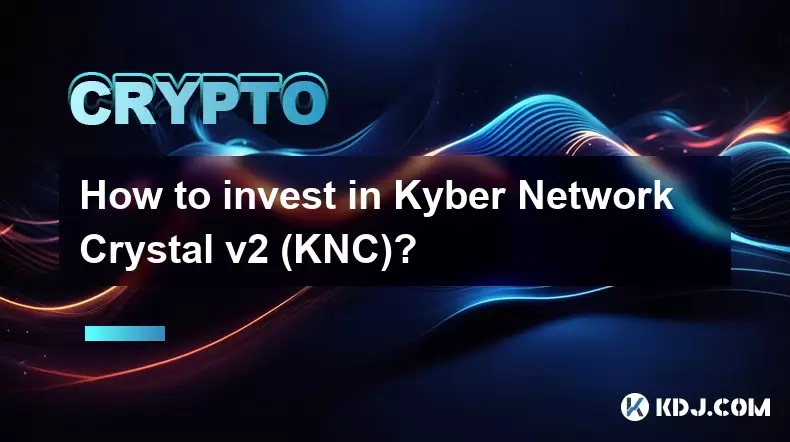-
 Bitcoin
Bitcoin $121700
1.50% -
 Ethereum
Ethereum $4724
2.29% -
 XRP
XRP $3.230
-1.48% -
 Tether USDt
Tether USDt $1.000
0.05% -
 BNB
BNB $856.9
0.95% -
 Solana
Solana $203.2
2.41% -
 USDC
USDC $0.9998
0.02% -
 Dogecoin
Dogecoin $0.2420
-2.94% -
 Cardano
Cardano $0.9878
13.62% -
 TRON
TRON $0.3652
2.74% -
 Chainlink
Chainlink $23.35
-0.14% -
 Hyperliquid
Hyperliquid $46.38
3.82% -
 Stellar
Stellar $0.4462
-1.59% -
 Sui
Sui $3.963
0.50% -
 Bitcoin Cash
Bitcoin Cash $605.7
-0.07% -
 Hedera
Hedera $0.2686
1.64% -
 Ethena USDe
Ethena USDe $1.001
0.00% -
 Avalanche
Avalanche $25.03
0.69% -
 Litecoin
Litecoin $128.1
-2.47% -
 Toncoin
Toncoin $3.518
0.37% -
 UNUS SED LEO
UNUS SED LEO $9.264
0.22% -
 Shiba Inu
Shiba Inu $0.00001362
-2.28% -
 Uniswap
Uniswap $11.50
-2.45% -
 Polkadot
Polkadot $4.195
-0.48% -
 OKB
OKB $101.9
-9.51% -
 Bitget Token
Bitget Token $4.783
1.11% -
 Dai
Dai $0.9999
0.01% -
 Cronos
Cronos $0.1639
-2.59% -
 Pepe
Pepe $0.00001187
-3.61% -
 Aave
Aave $326.2
1.42%
SOL coin investment value analysis: Is it worth buying?
Solana (SOL)'s high throughput and low fees compete with Ethereum, but network outages and volatility pose significant risks. Investment requires assessing technological advancements, dApp adoption, market sentiment, and regulatory uncertainty, alongside thorough fundamental and technical analysis.
Mar 11, 2025 at 03:20 pm

Key Points:
- Solana's (SOL) value proposition rests on its high transaction throughput and low fees, aiming to compete with established networks like Ethereum. However, network outages and controversies have impacted its reputation and price.
- Investment decisions should consider SOL's technological advancements, adoption rate by decentralized applications (dApps), and the overall cryptocurrency market sentiment.
- Risk tolerance is crucial; SOL, like all cryptocurrencies, is highly volatile. Diversification within a broader investment portfolio is recommended.
- Fundamental analysis, focusing on network activity, developer engagement, and ecosystem growth, is vital alongside technical analysis of price charts.
- Regulatory uncertainty surrounding cryptocurrencies globally presents another significant risk factor.
SOL Coin Investment Value Analysis: Is it Worth Buying?
Solana (SOL) has emerged as a prominent player in the cryptocurrency landscape, promising a faster and cheaper alternative to Ethereum. Its unique architecture, based on a novel Proof-of-History consensus mechanism, enables significantly higher transaction speeds compared to many other blockchains. This has attracted developers and investors alike, leading to a surge in its price in the past. However, the road has not been without its bumps.
The network has experienced several notable outages, raising concerns about its reliability and stability. These incidents have shaken investor confidence and contributed to price volatility. Addressing these issues and ensuring long-term network stability are crucial for Solana's continued success and adoption. The underlying technology and the team behind it continue to work towards improvements.
One of the key factors influencing SOL's investment value is the growth and adoption of decentralized applications (dApps) built on its platform. A thriving ecosystem of dApps demonstrates real-world utility and strengthens the network's overall value proposition. The more applications utilizing Solana, the greater the demand for SOL, potentially driving up its price. However, the competition in the DeFi space is fierce, with established networks and new entrants vying for market share.
Analyzing the investment value of SOL necessitates considering the broader cryptocurrency market. The overall sentiment towards cryptocurrencies can significantly impact the price of individual coins, including SOL. Market trends, regulatory changes, and macroeconomic factors all play a role in shaping the investment landscape. A bearish market can negatively impact even the most promising projects.
Technical analysis, involving the study of price charts and trading volume, provides insights into potential price movements. Identifying support and resistance levels, as well as trend lines, can help investors make informed decisions. However, technical analysis should be used in conjunction with fundamental analysis for a more comprehensive assessment.
Fundamental analysis focuses on the underlying value of SOL, taking into account factors such as network performance, developer activity, and the overall health of the Solana ecosystem. Examining metrics like transaction volume, the number of active wallets, and the growth of dApps provides a more holistic understanding of the network's health and potential.
Regulatory uncertainty remains a significant risk factor for all cryptocurrencies, including SOL. Governments worldwide are grappling with how to regulate this nascent industry, and changes in regulatory frameworks can significantly impact the price and accessibility of crypto assets. This uncertainty adds another layer of complexity to the investment decision.
The volatility inherent in the cryptocurrency market is another crucial factor to consider. SOL, like most cryptocurrencies, is known for its price swings. Investors should only invest what they can afford to lose and have a high risk tolerance. Diversification across different asset classes is crucial to mitigate risk.
Considering all these factors, whether SOL is "worth buying" is subjective and depends on individual risk tolerance and investment goals. A thorough understanding of the technology, the market, and the risks involved is essential before making any investment decision.
Frequently Asked Questions:
Q: What are the main advantages of Solana compared to other blockchains?
A: Solana boasts significantly higher transaction throughput and lower fees than many competitors, like Ethereum. This is achieved through its innovative Proof-of-History consensus mechanism.
Q: What are the major risks associated with investing in SOL?
A: Major risks include network outages, regulatory uncertainty, market volatility, and competition from other blockchain projects.
Q: How can I perform due diligence before investing in SOL?
A: Conduct thorough research, including examining network performance data, developer activity, and the overall health of the Solana ecosystem. Also, study price charts and market trends.
Q: Is SOL a good long-term investment?
A: Whether SOL is a good long-term investment depends on various factors and individual risk tolerance. Its success hinges on overcoming technical challenges, maintaining network stability, and attracting widespread adoption.
Q: Where can I buy SOL?
A: SOL is available on many cryptocurrency exchanges, but it's crucial to choose a reputable and secure platform. Always research exchanges thoroughly before using them.
Q: What is the Proof-of-History consensus mechanism?
A: Proof-of-History is a novel consensus mechanism used by Solana to achieve high transaction throughput. It creates a verifiable history of events, improving the efficiency and speed of transactions.
Disclaimer:info@kdj.com
The information provided is not trading advice. kdj.com does not assume any responsibility for any investments made based on the information provided in this article. Cryptocurrencies are highly volatile and it is highly recommended that you invest with caution after thorough research!
If you believe that the content used on this website infringes your copyright, please contact us immediately (info@kdj.com) and we will delete it promptly.
- Kazakhstan's Crypto Leap: Bitcoin ETF and Central Asia's Digital Finance Future
- 2025-08-13 12:45:19
- BlockDAG Presale Blazes Past $371M: Fundraising Frenzy Fuels Crypto Sensation
- 2025-08-13 13:05:21
- Meme Coins: Chasing the 2025 Surge – Which Will Moonshot?
- 2025-08-13 10:25:23
- Bitcoin's Wild Ride: Rally, Pullback, and What's Next
- 2025-08-13 10:25:23
- Bitcoin, Bitmax, and Institutional Demand: A New Era of Crypto Investment
- 2025-08-13 10:45:12
- Solana, ROAM, and Airdrops: What's the Buzz in 2025?
- 2025-08-13 11:35:13
Related knowledge

How to purchase Aragon (ANT)?
Aug 09,2025 at 11:56pm
Understanding Aragon (ANT) and Its PurposeAragon (ANT) is a decentralized governance token that powers the Aragon Network, a platform built on the Eth...

Where to trade Band Protocol (BAND)?
Aug 10,2025 at 11:36pm
Understanding the Role of Private Keys in Cryptocurrency WalletsIn the world of cryptocurrency, a private key is one of the most critical components o...

What is the most secure way to buy Ocean Protocol (OCEAN)?
Aug 10,2025 at 01:01pm
Understanding Ocean Protocol (OCEAN) and Its EcosystemOcean Protocol (OCEAN) is a decentralized data exchange platform built on blockchain technology,...

How to invest in Kyber Network Crystal v2 (KNC)?
Aug 12,2025 at 05:21pm
Understanding Kyber Network Crystal v2 (KNC)Kyber Network is a decentralized liquidity hub built on the Ethereum blockchain that enables instant token...

Where can I buy UMA (UMA)?
Aug 07,2025 at 06:42pm
Understanding UMA and Its Role in Decentralized FinanceUMA (Universal Market Access) is an Ethereum-based decentralized finance (DeFi) protocol design...

How to sell my Ren (REN) tokens?
Aug 13,2025 at 11:35am
Understanding REN Tokens and Their Role in Decentralized FinanceREN is an ERC-20 token that powers the Ren protocol, a decentralized interoperability ...

How to purchase Aragon (ANT)?
Aug 09,2025 at 11:56pm
Understanding Aragon (ANT) and Its PurposeAragon (ANT) is a decentralized governance token that powers the Aragon Network, a platform built on the Eth...

Where to trade Band Protocol (BAND)?
Aug 10,2025 at 11:36pm
Understanding the Role of Private Keys in Cryptocurrency WalletsIn the world of cryptocurrency, a private key is one of the most critical components o...

What is the most secure way to buy Ocean Protocol (OCEAN)?
Aug 10,2025 at 01:01pm
Understanding Ocean Protocol (OCEAN) and Its EcosystemOcean Protocol (OCEAN) is a decentralized data exchange platform built on blockchain technology,...

How to invest in Kyber Network Crystal v2 (KNC)?
Aug 12,2025 at 05:21pm
Understanding Kyber Network Crystal v2 (KNC)Kyber Network is a decentralized liquidity hub built on the Ethereum blockchain that enables instant token...

Where can I buy UMA (UMA)?
Aug 07,2025 at 06:42pm
Understanding UMA and Its Role in Decentralized FinanceUMA (Universal Market Access) is an Ethereum-based decentralized finance (DeFi) protocol design...

How to sell my Ren (REN) tokens?
Aug 13,2025 at 11:35am
Understanding REN Tokens and Their Role in Decentralized FinanceREN is an ERC-20 token that powers the Ren protocol, a decentralized interoperability ...
See all articles

























































































